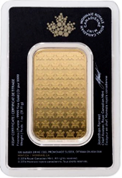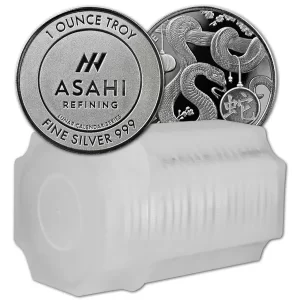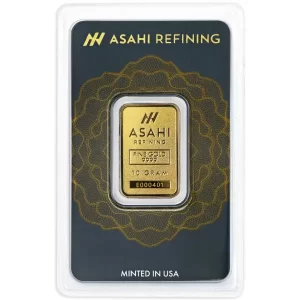A couple weeks ago we saw two major banking failures in the United States prompting U.S. government officials and central bankers, as well as those from other countries to get in front of the people of each nation to reassure them the banking system was sound and their savings were safe. Well, not a week later we saw one of the oldest banks in the world, Credit Suisse, collapse under the weight of tightening financial conditions seen across the world. Naturally, this has caused world citizens to question whether they were being told the truth about their banks being in a good position, and for good reason, as now Deutsche Bank in Germany, a bank that has been around for over 150 years sits on the hot seat. While, of course, Olaf Scholz, Chancellor of Germany, made a statement that Deutsche Bank was strong, and the greater Eurozone does not need to worry about its health, due to us being told this before, let us take a peak under the hood to see if Deutsche Bank is as strong as we are told.
First off, below is a chart tracking the stock price of Deutsche Bank. What do you notice about the bank’s current value?
This is a bank that saw its all-time-high prior to the 2008 Great Financial Crisis, and since then, has been getting slowly eroded. While it is true that most other banks and financial institutions hit a peak prior to the 2008 collapse, once they were bailed out, these banks soared to make new all-time-highs just prior to 2020, and some even came after that point once stimulus checks began to be sent out. That said, Deutsche Bank alternatively has continued with its slow bleed. From that chart alone, it would be difficult to find signs of strength.
Before going deeper, it is important for an asset called Credit Default Swaps to be explained for those that may not know what they are, and from that point we can take a look at how Deutsche Bank and Credit Suisse compare in this area, given Credit Suisse was the last major bank to go belly-up.
So what is a Credit Default Swap or CDS?
In this scenario, we are a lender, you are a bank, and we loan you a large sum of currency that you were required to pay back. At the time, your credit rating was perfect, signalling that you were healthy and capable of paying me back. However, if times get rough like we are seeing today, and your credit rating as the bank begins to fall, for a fee (like an insurance policy), we can purchase a Credit Default Swap or CDS that will reimburse us if you happen to default on your debt and cannot pay us back. The premium on that insurance contract (CDS) goes up, as the borrowers’ (in this case you as the bank) creditworthiness declines.
With that said, below is a chart that shows the Credit Default Swap premiums for Credit Suisse just prior to their collapse:
As you can see, the premium remained relatively low on Credit Suisse credit default swaps, spiking in 2020 as the world began to worry about banks on mass. However, as we know, all the currency printing that took place in 2020 caused these worries to subside as banks were injected with large amounts of liquidity. This band-aid only lasted a couple years before worries surged in 2022, before ultimate collapse in 2023. So how does Deutsche Bank compare? Take a look below:
You are seeing the exact same surge in premium seen at Credit Suisse before its inevitable implosion. This chart is highly signalling there is more trouble afoot for Deutsche Bank.
And so what does this mean for gold?
Well, in complete opposition to the banks, optimism for gold appears to be surging as confidence in banks and their fiat currencies continue tanking. Before looking at a chart surrounding gold, it is important we quickly go over the difference between a call option and a put option. Quite simply, when an investor purchases a call option, they are looking for the price of that asset they purchased the call option for to go higher, where as if they were to purchase a put option, they are looking for the price to go lower. The reason for that, both calls and puts lock you in at a set price for an asset, then once your call or put matures, you buy. If you buy a call and the price rises, you locked in a lower cost, putting you in the black. If you buy a put, essentially shorting the price, and the price drops, you locked in a more advantageous position. However, if the price moves down on calls, and up on puts, investors lose out, so making these bets relies highly on being accurate with WHEN you ultimately lock in a call or put option. With that said, take a look at the call/put contracts being purchased right now for gold:
Calls have taken off like a rocket, signalling a massive shift in investor sentiment toward the shiny yellow metal. As bank stocks continue their downtrend due to worrisome news coming out seemingly every other day, investors appear to be flocking to silver and gold at an unprecedented pace this past year.
Further to that, when you look at our final chart, the strength in both silver and gold are clear. Gold has been in a holding pattern while it fights to beak toward new highs, where as the same can be said for silver, but with far more ground to cover before reaching new highs set back in 1980, then again getting close in 2011.
It is the theory of many gold and silver analysts that while both silver and gold are undervalued given the amount of currency floating around the system, silver still remains as the most undervalued asset on earth. It is theorized, that gold will ultimately kick the door down when it comes to a price ceiling, and silver will sprint through it.
If you too are on the side that believes banks are appearing more and more unstable each and every week, yet alternatively see the advantages presented to the holders of precious metals – look no further than one of the most respected mints in the world, Royal Canadian Mint, when looking for quality metals. Below is their 1oz Gold Bar that continues to be a favourite amongst stackers and collectors alike.
 Hi,
Hi,























